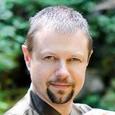Many Qigong enthusiasts have been curious about the similarities and distinctions between my family style called Qi Dao and other Qigong styles. First of all, I want to invite you to consider this thought: “We wage wars by stressing differences; we wage peace by stressing similarities.” You may quote me on this.
In order to understand better the significance of Qi Dao, let us look into the historical development of Qigong. Most Qigong styles were organized by and for the followers of one belief system or another in ancient China, Tibet, Mongolia and Korea. Following the establishment of the main Eastern schools of thought about twenty five hundred years ago, Qigong eventually developed six distinctive branches: Daoist, Buddhist, Tantric, Therapeutic, Wushu (Martial Arts), and Kung Fu-tze (Confucian Qigong).
About 2,500 years ago, Chinese philosopher Lao-tze presumably wrote Dao De Jing, which brought together many pieces of ancient Oriental wisdom and formed the foundation of Daoism. The adherents of that teaching formulated Daoist Qigong (also known as Taoist Yoga) dedicated to attainment of great longevity and, supposedly, immortality. Around the same period of time, the followers of the famous Chinese philosopher Kung Fu-tze (Confucius) created Confucian Qigong mainly concerned with mentoring outstanding citizens and guiding them in living in a harmonious society. At the same time in India, Buddha Shakyamuni taught his teachings to thousands of devoted disciples, who eventually started practicing Buddhist Qigong to achieve spiritual awakening or nirvana (my teachings of Dream Yoga fall under this rubric).
Adepts of Tantra, a mystical sect of Hinduism that spread via the Himalayas into Tibet, eventually came up with Tantra Yoga, also known as Tantric Qigong, dedicated to experiencing awakening through enlightening personal and transpersonal relationships. Therapeutic Qigong, a corner stone of Oriental Medicine, is mostly concerned with health and holistic healing. Martial arts or Wushu Qigong, as the name implies, is dedicated to effective self-defense and protection of others.
Nowadays, many Qigong styles are still confined within the parameters of their respective doctrines, while others integrate some aspects of two or more branches of Qigong. For example, Buddhist monks from the Shaolin Temple are known for both martial arts prowess and competence in Buddhist Qigong. Many Daoist Qigong masters are also great healers and/or martial artists. In fact, Tai Chi Chuan is an offspring of Daoist martial arts. By the same token, Tantra is a major part of Buddhist tradition in Tibet and Mongolia where lamas (both Buddhist and Shamanic spiritual teachers) often integrate Tantric and Buddhist Qigong practices.
There is a tradition; however, that does not merely try to reach for the fruits on the ends of the branches of the “Qigong tree,” but rather goes back to the Shamanic roots of the entire tree and empowers its practitioners to stay true to the original universality of the art. Its practice allows advancing to high levels of achievement in all six applications of Qigong as a result of integrating the power and wisdom of the six branches into one. This non-sectarian tradition has been preserved for many centuries by twenty-seven generations of Qi Dao masters, who explored numerous possible applications of energy awareness in all spheres of life, from fighting to healing and sexual energy arts.
Lama Somananda Tantrapa is the holder of the lineage of Qi Dao, also known as Tibetan Shamanic Qigong, which has been fostered in his clan for 27 generations since 1224 AD. His unique background is complex enough to include near-death experiences, Black belt in Aikido and ordination as a Tibetan lama. He has over 30 years of experience in Qi Dao and other Internal Arts taught by his Grandfather who was the last Grand Master of this unique Qigong style.
Lama Tantrapa’s initiatives dedicated to peace work and spiritual freedom were highly recognized by such leaders as His Holiness the Dalai Lama and Venerable Junsei Terasawa. Due to persecution in his homeland, he received religious asylum in the United States in 1997.
Lama Tantrapa’s coaching has inspired many professional athletes, speakers, dancers, singers, writers and actors to open up to the infinite source of intuition that exists within everyone. His private practice in Qigong Therapy has been providing healing and wellness coaching to hundreds of clients of all ages from all walks of life. He is the Founder of Academy of Qi Dao – the first and only Qigong School in Guam with branches in Portland, Oregon and Houston, Texas.
Lama Tantrapa is an author of numerous articles, as well as a book Qi Dao –Tibetan Shamanic Qigong and the name-sake DVD. Being an avid speaker and presenter, he appeared on many Radio and TV programs in the US, Guam and abroad. He currently serves on the Board of the National Qigong Association.
For more information on Qi Dao please visit www.qidao.org.

Post new comment
Please Register or Login to post new comment.